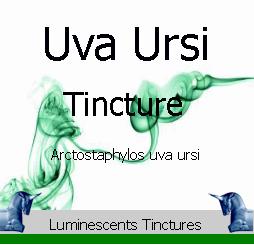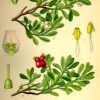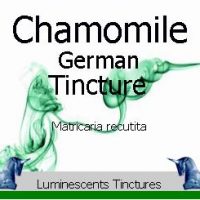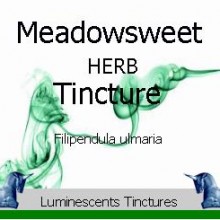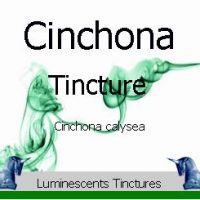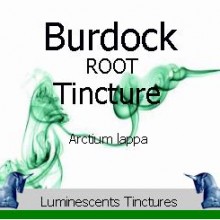Uva Ursi Leaf (Arctostaphylos uva ursi), from which Uva Ursi Tincture is derived is also known as Bearberry, Kinnikinnick and Pinemat Manzanita. The herb has a history of medicinal use dating back to the 2nd century. It is now grown all over the world but in the USA it is quite common. It has pretty little bell shaped or urn shaped flowers and red fruits.
It is frequently used in First American native smoking blends and one of its names, Kinnikinnick, is simply Algonquin for the word mixture!
Traditional Uses for Uva Ursi Tincture:-
Uva ursi has a history of medicinal use dating back to the 2nd century of the modern era.
Native Americans used it as a remedy for urinary tract infections; in fact, until the discovery of sulphur drugs and antibiotics, uva ursi was the treatment of choice for such bladder and related infections. Cystitis and kidney stones have also been treated with Uva ursi.
The primary compound in Uva ursi is arbutin, the hydroquinone derivative. The stomach absorbs it and changes it into a substance which disinfects, is antimicrobial, and has astringent properties. Arubutin fights infection, soothes irritation, and reduces inflammation during urination.
Uva Ursi contains several chemicals, primarily hydroquinone and hydroquinone derivatives, that make it potentially useful for urinary conditions and is used to treat infections such as cystitis, urethritis and nephritis. The primary compound in Uva ursi is arbutin, the hydroquinone derivative. The stomach absorbs it and changes it into a substance which disinfects, is antimicrobial, and has astringent properties. Arubutin fights infection, soothes irritation, and reduces inflammation during urination.
Cautions
The herb is considered relatively safe but there are occasional side effects such as increase heart rate, irritability, insomnia, and vomiting can occur while using uva ursi herb and women during pregnancy and immediately after the birth should not take it. Those with elevated blood pressure should also avoid its use.

